Rifles by countries and continents. Part of 18. Mauzers of Persia and Turkey
That is why the same Persia at this time, looking around, decided to attend to modern armament for her army, so as not to lose the remnants of its former independence. Money? Well, you can always get the money by striking the sticks on the heels of your subjects; nobody has also canceled the zindan, so the East never had these problems. Like the countries of the Caribbean, however.
At first, for some reason, the Mannicher rifles of the 1886 model of the year received a palm from Persia. It is not clear how they seduced the Persians, but they seduced them. However, as time went on, they began to notice that Mauser rifles were better, more reliable, that at the end of the First World War, even Austria-Hungary itself had switched to them. That is, she didn’t look for good from the principle of good, and that says a lot.
Mannicher rifle, model 1886, (Army Museum, Stockholm)
Mannicher 1886 rifle device
Therefore, already in 1929, Persia moves to a Mauser rifle, and receives a “long rifle” of the M1898 / 29 model, which it orders in the same 1829 year in Czechoslovakia at a military factory in Brno. And the same rifle received another designation M1898 / 38, because the order was repeated. But we are interested in volumes, and they were quite large: 80000 under the 1929 contract of the year and 100000 under the 1938 contract. True, with the last order there was a hitch due to the events of 1938 of the year, but Germany, having occupied Czechoslovakia, did not begin to object to the fulfillment of this contract in 1940. So in the end, Iran (Persia became Iran in the 1935 year!) Nevertheless received.
National emblem of Iran in the chamber of the rifle M1898 / 36.
Purely external features of this rifle are: blackened receiver and barrel, but a nickel-plated bolt with a straight reloading handle. Standard Mauzer cartridge and standard German caliber. The inscription on the chambers is inscribed in Arabic letters, so that it is very easy to recognize the “Iranian Mauser” rifle by both the coat of arms and this inscription.
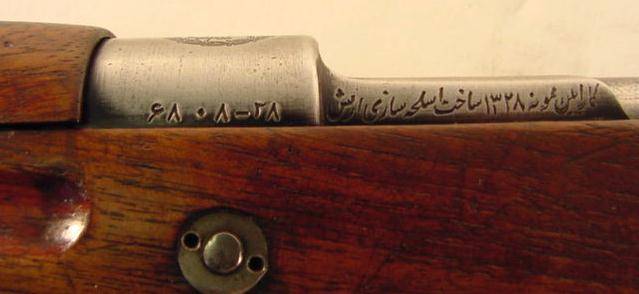
The inscription on the bolt carrier.
Another difference was in the notation on the sight, where instead of the usual numbers we used real Arabic numerals and in marking the details of the rifle.
A sight with designation of the Arabian figures and their transfer to the European.
It should be noted here that the numbering system in Farsi is present on all Iranian rifles. Usually the designation on the wooden parts was applied in three lines: first, the serial number, followed by the second and third lines of characters, which means the word "Infantry".
It also leads to confusion that the dates on the rifles often belong to the Iranian calendar. And it should not be confused with the Islamic calendar used in other Muslim countries. This is the so-called “Jalali Calendar”, a purely Iranian calendar (by the way, also used in Afghanistan) - and this is the solar calendar, starting every year from the vernal equinox and determined by accurate astronomical observations in Tehran. The mathematics behind all these datings is quite complicated, but there are easy to use translation programs for some dates on the Internet.
Only in 1949, it came to the release of its own M1949 carbines at the plant in Mosalsalsasi, built again with the participation of specialists from Czechoslovakia. This model was based on the popular Czechoslovak MNNXX carbine delivered to Iran under the 1930 contract of the year. This time the bolt handle on it was already curved and a recess was made under it on the bed. Interestingly, the year of release was knocked out on the curved shutter-handle in Arabic numerals, but on the sight, our numbers were European! The dagger bayonet from the M1938 / 1898 rifle was relied on to the carbine.
Now we will move to Turkey and see what was there. And there was an impressive collection weapons first of all from the USA, for example, the same 1876 hard drives of the year, with which the Turks successfully fought with Russia in the 1877-1878 war.
But at the end of the nineteenth century, the Turks sharply shifted to Germany. German instructors trained the Turkish army, German rifles entered service with the Turkish army and fought in the two Balkan wars and during the First World War.
When Turkey decided to equip its armed forces with sliding-bolt rifles in 1887, they immediately ordered half a million 1871 / 84 rifles to the firm of the Mauser brothers, and immediately became one of the largest customers of this company. In many respects, it was this contract that guaranteed the financial survival of the Mauser brand and thus gave the company a huge profit, which allowed it to develop further.
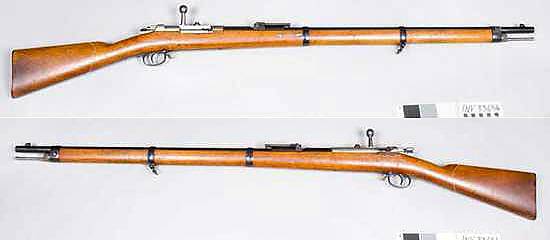
Mauser rifle M1871 / 84. (Army Museum, Stockholm)
This contract was so important that Isidor Leve and Paul Mauser personally discussed it, and they both went to Turkey to sign an agreement with the Turkish government. The order was to be distributed between the enterprises of Löwe and Mauser, but in the end all the rifles were made at the Mauser factory in Oberndorf on the Neckar. The Turkish model 187l / 84 differed from the standard Mauser in that the Turkish rifle used the cartridge 9,5x60R. The Turks called this weapon the 1887 model of the year. The rifle had an under-barrel magazine for eight rounds and two more could be had on the feeder and in the barrel. Initial bullet speed 550 m / s. - was a record for soft lead bullet. In general, this model of a rifle with a grenade launcher was more perfect than everyone else, and even more perfect than the original one! It could be said that the caliber 9,5-mm for the cartridge with black powder was optimal. Not so quickly lead holes in the barrel, like a smaller caliber and at the same time, the return was not as strong as the larger ones. So much so that when the Turks began to use smokeless powder, they did not replace the bullet in this cartridge. It was left the same, that is, it was made of pure lead and in paper wrapper. Mauser 1887 rifles were later used by Turkish reserve troops and used on the Caucasian front in 1914-1917.
Cartridge 9,5x60R.
One of the conditions of the contract was that Turkey could use any new developments in Mauser rifles that occurred during production. In the 1890 year, when about half of the contract was ready, Turkey decided to switch to a more modern model, the 1889 of the year - ie. the so-called "Belgian Mauser". Thus, around 250 000 of the Turkish model 1887 of the year was released.
The Mauser of 1887 was good for everyone, but in 1890 the Turkish government wished to order a new batch of rifles called the “Turkish Mauser” of M1890. The basis was taken to be the “Belgian Mauser” of M1889, but with changes. Her trunk lost an external “shirt” and got a very short upper wooden trim on the trunk. In addition, the Belgian model was originally designed for a cartridge of 7,65x53 mm, and the Turks wanted a rifle under the German 7,92 x57 mm cartridge. On the chamber of these rifles was knocked out "Tohra" - the monogram of Sultan Abdul-Hamid II, who ruled in 1876 - 1909. The badge was an Arabic script in the following text: “Abdul Hamid is always victorious, a warrior-winner”. He was also placed on the top of the bayonet handle.
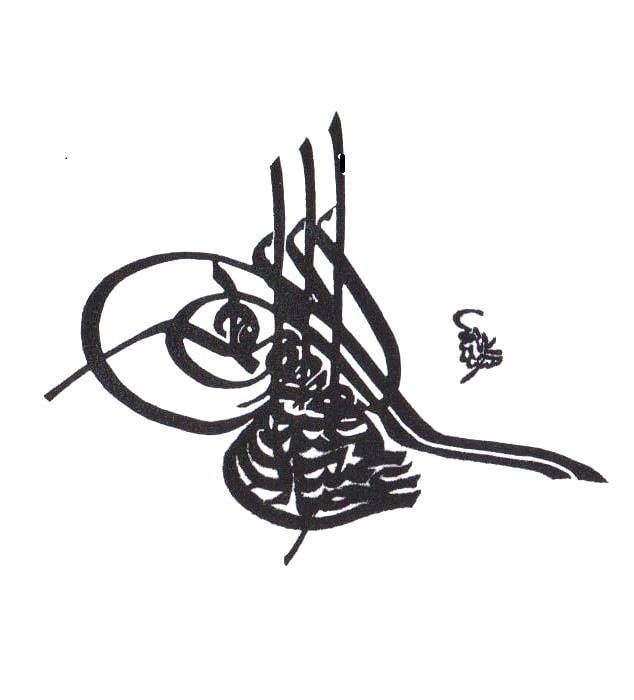
"Tohra"
The next model of the Mauser rifle for the Turkish army was the 1893 sample rifle of the year. This time, the sample was taken by the “Spanish Mauser”, which became “Turkish”. The main difference is the store, recessed into the box with a staggered arrangement of cartridges. The rifle was upgraded in the 1933 year and became known as the M1893 / 33.
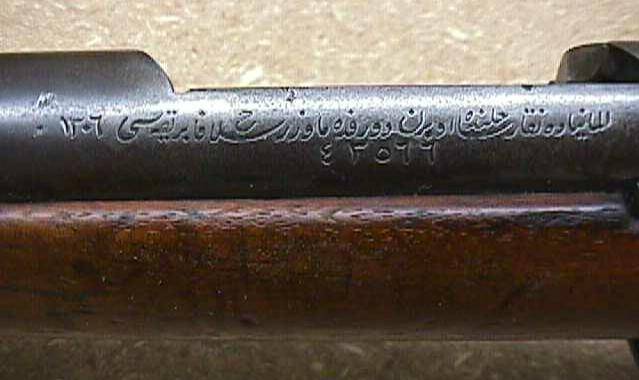
This is what is written here. In Arabic, of course: "Waffenfabrik Mauser Oberndorf Neckar-DeutcheRiech."
In 1903, a new delivery followed, now based on the Gewer 98, but still with a straight grip. Again, they were originally calculated under the chambered mm 7,65x53, but they were re-billed under the “German 8-mm caliber” chosen by the Turks at the Ankara weapons factory. The rifle in 1938 was modernized and began to be called M1903 / 38.
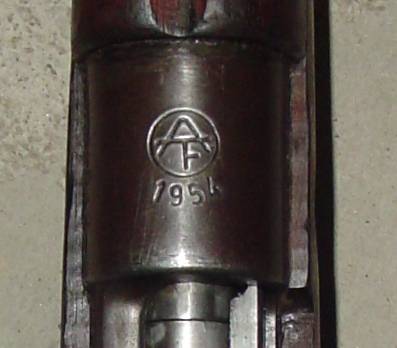
Rifle with the stigma of the factory in Ankara.
During the First World War, Turkey received many “commissioned” M1888 rifles from Germany. Many of them were converted in 1938 for firing ammunition arr. 1905 "S". They removed the "shirt" of the barrel and put a wooden barrel trim.
At the beginning of the 20s, Czechoslovakia became a supplier of rifles for Turkey and began to manufacture M1898 / 22 rifles for it. On the chamber of these rifles was the inscription: “Сeskoslovenska zbroevka BRNO”.
Berthier carabiner with a five-slot Mle 1916 store. (Army Museum, Stockholm)
During World War II, the Turkish government turned out to have several thousand (from 5 to 10 thousand) French Berthier rifles, mostly 1907 / 15 models, but also Mle 1916. Most likely this weapon from Syria to Iraq was sent by the French Vichy government at the request of Germany. After the war, Turkey had problems with illegal logging of its valuable Circassian walnut forests and the government decided that it was necessary to equip its foresters with suitable weapons. It was decided to use a non-standard caliber of ammunition for these rangers, in case their guns were stolen, they could not be used. Berthier rifles chambered for 8x50R Lebel were the most accessible in this regard, which is why they were chosen for this purpose. The magazine contained only three cartridges, so that the serious combat value of these weapons can not speak.
Carabin of foresters MxNumx.
The rifles were cut off, with some of the parts going to them from the Mauser 1905 carbines of the year (without a bayonet). A new stamp appeared on the chamber: “TC Orman” (“Turkish Republican Forest Company”) with the date 1948 of the year. It has been redone from 5000 to 10 000 rifles. By the way, they are inexpensive on the collection market - 250-300 dollars, since the demand for Turkish weapons is generally small.
Designation on the carbine of the carbine.
To be continued ...
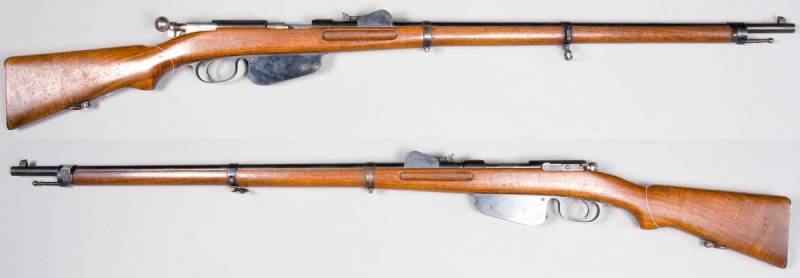
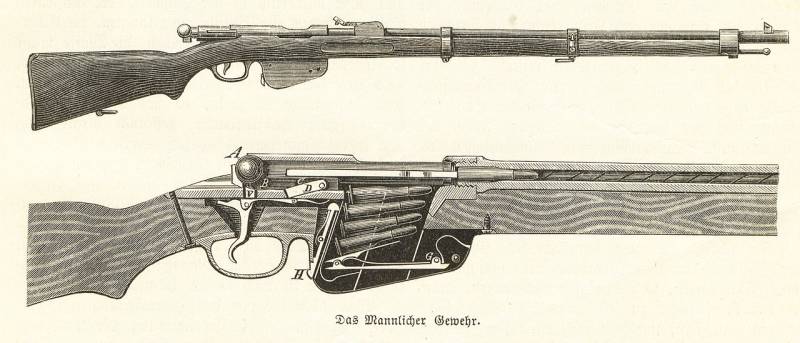
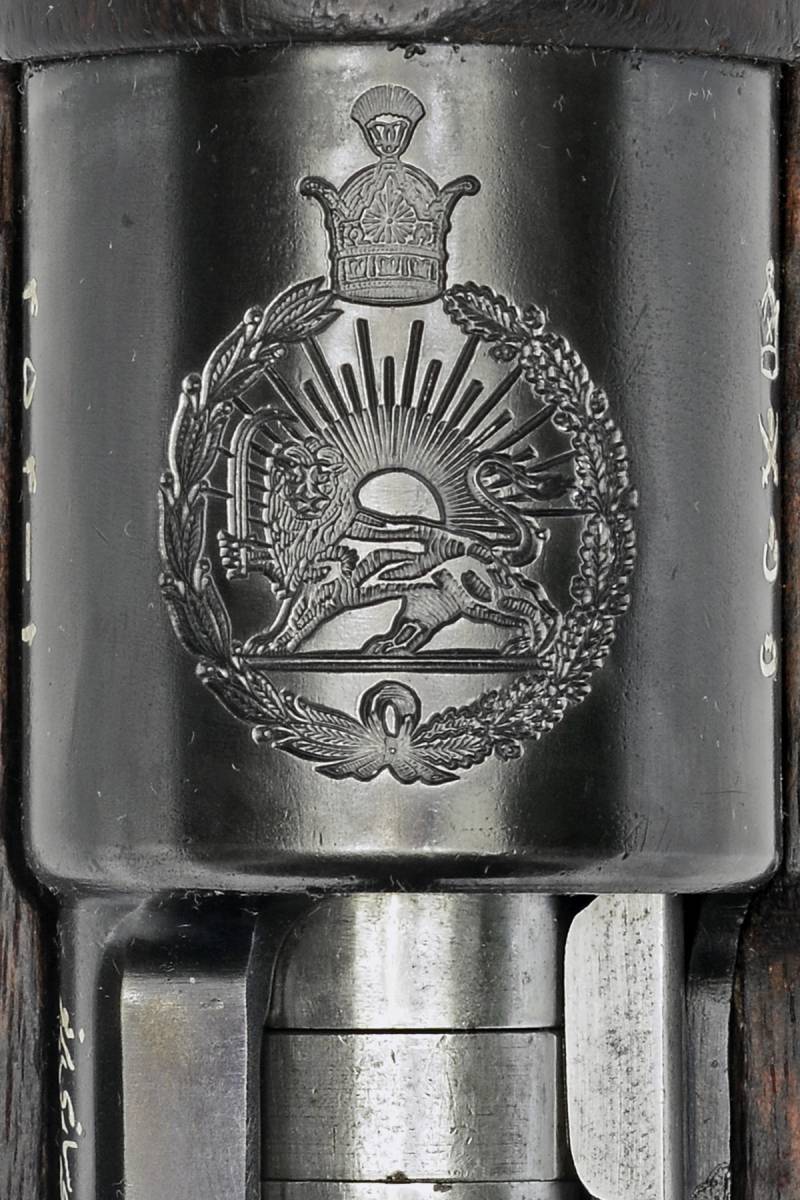
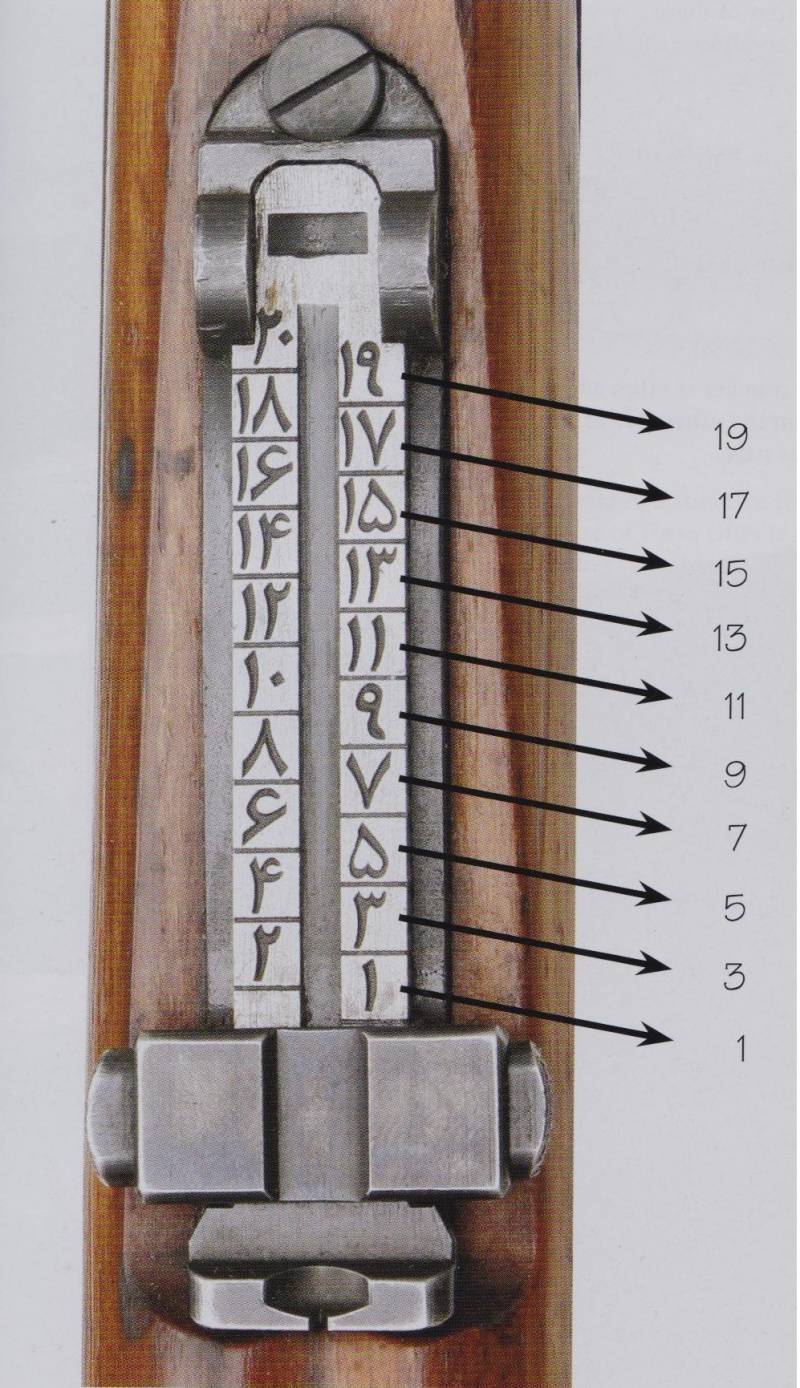

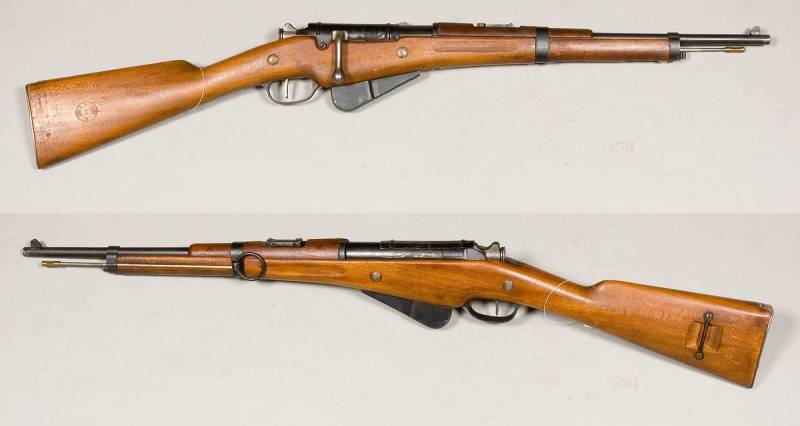

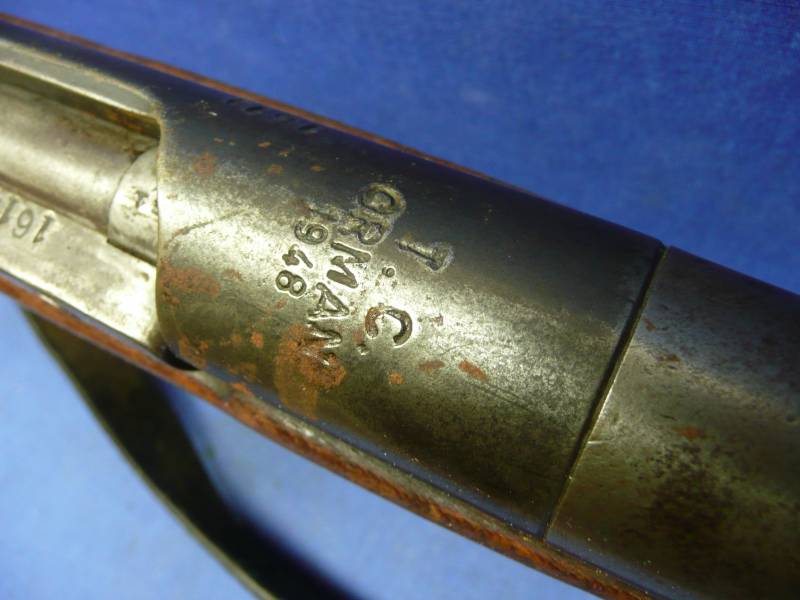
Information